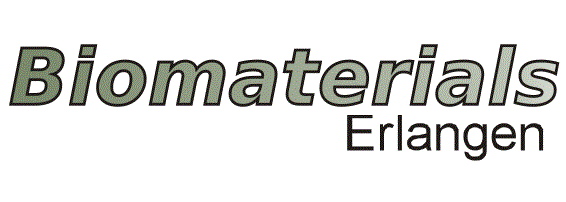Clara Steinert
Clara Steinert
Masterstudentin
Development and optimization of ADA-GEL based composite bioinks for skeletal muscle tissue engineering
Supervisors: Hsuan-Heng Lu, Prof. Aldo R. Boccaccini
3D-bioprinting is a layer-by-layer approach to manufacture cell-laden biomaterials mimicking the hierarchal structure of living tissues. For this fabrication method, alginate-dialdehyde (ADA) based hydrogel is a material whose suitability has already been investigated for various applications [1]. As ADA shows good biocompatibility and printability but lacks anchors for cell attachment, it is often used in combination with gelatin in the form of ADA-GEL [2]. The further addition of bioactive glass to the ink has been shown to result in scaffolds with improved mechanical and biological properties [3].
The aim of this project is to determine a composition of ADA-GEL incorporating bioactive glass particles, which combines the requirements of good printability and high cytocompatibility for bioprinting with mouse myoblasts.
[1] S. Reakasame and A. R. Boccaccini, “Oxidized Alginate-Based Hydrogels for Tissue Engineering Applications: A Review,” Biomacromolecules, vol. 19, no. 1. American Chemical Society, pp. 3–21, Jan. 08, 2018. doi: 10.1021/acs.biomac.7b01331.
[2] S. Heid et al., “Bioprinting with bioactive alginate dialdehyde-gelatin (ADA-GEL) composite bioinks: Time-dependent in-situ crosslinking via addition of calcium-silicate particles tunes in vitro stability of 3D bioprinted constructs,” Bioprinting, vol. 26, Jun. 2022, doi: 10.1016/j.bprint.2022.e00200.
[3] F. Bider, E. Karakaya, D. Mohn, and A. R. Boccaccini, “Advantages of nanoscale bioactive glass as inorganic filler in alginate hydrogels for drug delivery and biofabrication,” European Journal of Materials, vol. 2, no. 1, pp. 33–53, Dec. 2022, doi: 10.1080/26889277.2022.2039078.

